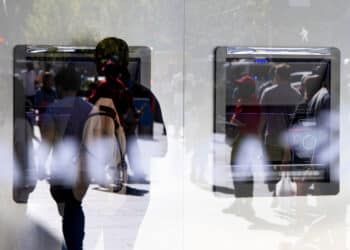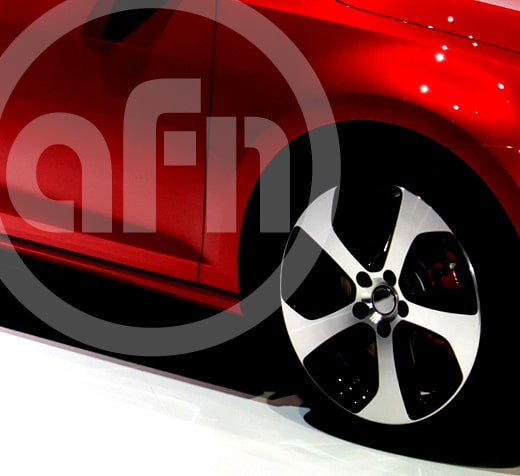LIVE BLOG: White House Briefing on the Cash for Clunkers Program @ 4 PM ET on Aug 20
4:04 PM ET: Call has yet to begin.
4:10: Call starts. Briefing is by a senior administration official.
4:11: Briefing will address the wind-down of C4C. Only a few months ago there were very few good news stories from the US automotive industry. What we have seen is a single program finding overwhelming success. Consumers have benefited enormously from this. Ave. fuel efficiency gains: 60%.
July and August showroom traffic was at a height not seen for a very long time.
4:13: Macroeconomic impact has been positive from this program. People are going back to work. Several major automakers are putting workers back to work, increases in production. Those macroeconomic benefits are going to have a sustained benefit.
Transportation Department determined the wind down will take place on Monday night at 8 p.m. ET.
4:16: All valid deals need to be submitted before that time. DOT has advised consumers and dealers to do deals that are valid and have all the necessarily paperwork. Pending deals: dealers should get those deals submitted and into the system. Expect this to be an orderly wind-down of this program.
4:17: DOT has review under 40% of apps submitted (nearly 170,000 apps). A large number of those are incomplete. Apps are then turned back to the dealer, who can resubmit app. $145mm of funds already paid out. DOT has ramped up capacity to review applications. Because a large number has to go back to dealers, there have been delays in payments going out.
4:19: DOT trying to improve process.
QUESTIONS
Q: How long will it take to process dealers submitted? Is there enough money in the program to cover a surge in apps?
A: DOT is increasing capacity to review transactions. That is an important step. They have already tripled the number of people working on this. Another factor that will improve speed is to improve the quality of the applications coming in. That is where the DOT is focused like a laser beam; the process will speed up going forward. Second question, DOT has been conservative in their estimates. $1.9b logged into the system. DOT’s estimates are that there is enough funds in the program. The overriding concern was to be conservative and to provide adequate time for a soft landing.
Q: Did the Auto Task Force have any role in suggesting that GM forward the funds for refunds? What happens if the amount of fundings exceed the available amount?
A: First one is easy; the answer is no. DOT’s estimates show it will not exceed the available capital.
Q: Is there a date for when these applications be paid out?
A: The DOT, the Administration now is focused on improving the completeness of application, and improvement of that will increase the pace.
[COMMENT: This program obviously went well beyond what the Obama administration expected. DOT is completely overwhelmed by the “unexpected increase in demand for this program.”]
Volume of capacity will increase significantly over the next few days.
Q: More funds for the program?
A: We are focused right now to wind down the program. There is no plan to seek new funds and extend the program. [COMMENT: Extension was considered, but will not be pursued.]
Q: Do you expect leftover funding?
A: We are confident that this is the right time to close out the program.
Q: GM backed out of a switch program? Environmentalists are planning to tell them to come back to the program. Will the Administration be involved in that?
A: Generally, the Administration is not involved in the day-to-day business decisions at GM or Chrysler.
Q: Comment on Senate bill to make the C4C program permanent.
A: No comment.
Q: What happens if a dealer gets the app in by Monday at 8 and there is a problem with the app? Will they have a chance to correct the app?
A: Yes.
Q: We are hearing from dealers that apps are being rejected for technicalities? Who will pay that back if they don’t get the voucher funds?
A: Apps rejected for technicalities: The Congress’s bill has specific safeguards that protect again fraud and abuse, as well as achieve environmental efficiencies. Anyone who participates needs 12 months of insurance and that the old and new cars meet the MPG requirements. Those fundamentally important elements of the application need to be met, but the dealer has a chance to correct those elements. The dealer is responsible for providing the correct information.
Q: What are the common problems with applications?
A: Making sure that there is valid documentation of the old and new cars. Insuring that you have demonstrated 12 months of continuing insurance and registration. Car must be disable and the title must be junked, so that it can’t be used again.
Final comment: The way the president articulated it, this is a high-class problem. If someone said a couple of months ago that we would be struggling with so many people would go into car dealerships and there are so many car sales, there are not many people who would have taken that with a straight face. This program has been an overwhelming success, one of the most successful stimulus programs in the history of this country.















